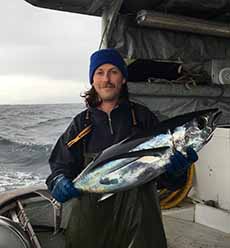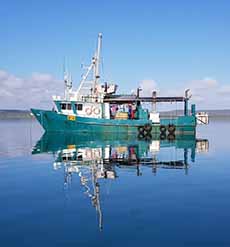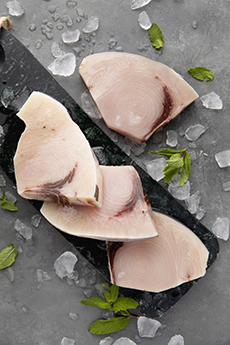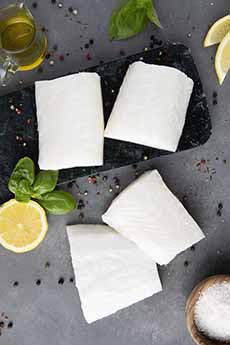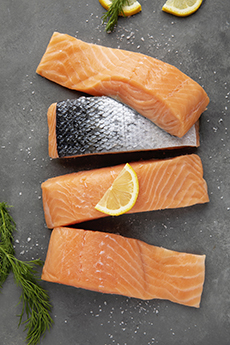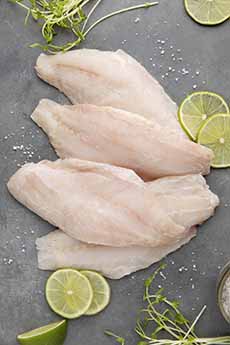Sustainable Seafood Options For World Oceans Day
|
|
June 8th is World Oceans Day. The observance was passed in 2008 by the United Nations General Assembly. All of us learned in grade school that oceans cover more than 70% of the planet. Here’s a refresher on other key points: But now, with 90% of big fish populations depleted though over-fishing, and 50% of coral reefs destroyed†, we are taking more from the ocean than can be replenished. Although it is for a different article than this one, here’s a quick note that in addition to overfishing, ocean pollution is egregious. Just one example: Eight million tons of plastic end up in our oceans every year, and make up 80% of all ocean debris. Fish mistake the plastic for food, eat it and die, diminishing their populations. Plus, as discarded plastic decomposes in the ocean, fish consume the microscopic pieces. Eating those fish puts that plastic in our bodies, as well. Here’s more about it. To protect and preserve the ocean and all it sustains, organizations and researchers are working on how create a new balance. The Marine Stewardship Council (MSC) was formed to encourage sustainable fishing practices that protect the future of fishing communities, preserve ocean ecosystems, and ensure seafood is available to everyone, always (photos #1 and #2). One immediate way is through aquaculture, or fish farming. When the American Heart Association recommended that we eat fish at least twice a week*, global per capita fish consumption almost doubled from the 1960s to 2012. Today, about half of all the seafood consumed by mankind is produced through aquaculture, also called fish farming [source]. Aquaculture is one of the fastest growing methods of producing food in the world. It’s a much more sustainable way to get protein than animal farming. Eating farmed fish is far better for the environment than eating meat or poultry. But aquaculture got a bad name in the past. A lot of damage was caused to the ocean environment via harmful practices. But those having been recognized, aquaculture techniques have improved greatly and will continue to do so. Fisheries in responsible countries are turning the practice into an environmentally friendly one. The most common type of aquaculture is farming in net pens (photo #3) or cages anchored to the sea floor in the ocean near the coast. There are also closed systems of tanks or ponds that float on water or operate on land. The Food and Agriculture Organization of the U.N. (FAO) estimates that more than 600 aquatic species are produced globally in a variety of aquaculture system. The FAO projects that by 2030, fish farming will be generate almost two-thirds of the fish consumed on the planet. Here’s more about it. D’Artagnan, long known for fine proteins from meats and game, ducks and poultryk, and charcuterie. A purveyor of choice to top chefs across the nation for the more than 35 years, the company has expanded into sustainable seafood in direct response to consumers’ growing interest in responsibly sourced proteins being conveniently delivered to their homes. The line includes both wild-caught fish and those raised by aquaculture. As it does with land proteins, D’Artagnan works with conscientious fishers who respect the environment and the ecosystems. All D’Artagnan seafood is certified sustainable, fair trade, or organic by gold-standard international watch groups. All of D’Artagnan’s offerings are flash-frozen at sea immediately after catch, or soon after on shore, to protect the flavor, texture and freshness, and portioned individually for convenience. They are delivered to your home frozen, and can be defrosted overnight in the fridge. CHECK OUT THE DIFFERENT TYPES OF SEAFOOD IN OUR SEAFOOD GLOSSARY. |
|
|
________________ *Fish are heart-healthy: high in protein, low in saturated fats and rich in omega-3 fatty acids. †Coral reefs provide shelter and food to a complex web of organisms that support the fish supply eaten by mankind. Without the coral reefs, the ocean will not be able to absorb as much carbon dioxide, leaving more CO2 in the atmosphere. The reefs also act as natural barriers to shorelines, protecting them from the negative effects of the water. As the coral reefs die, coastlines become more susceptible to damage and flooding from storms, hurricanes and cyclones. Here’s more about it.
|
||
